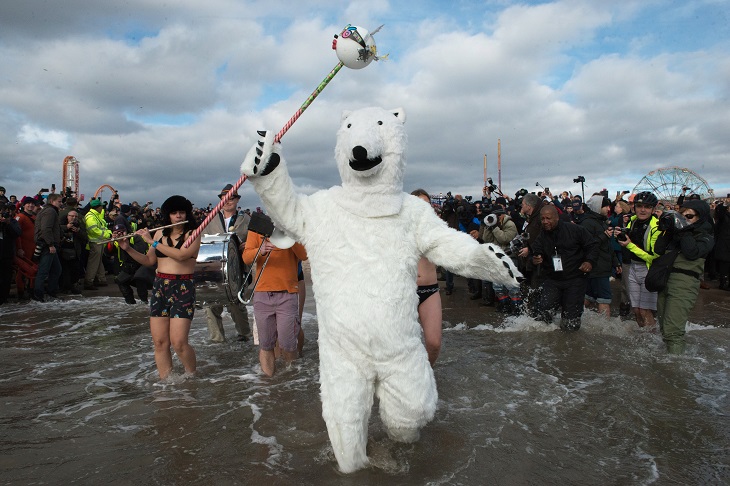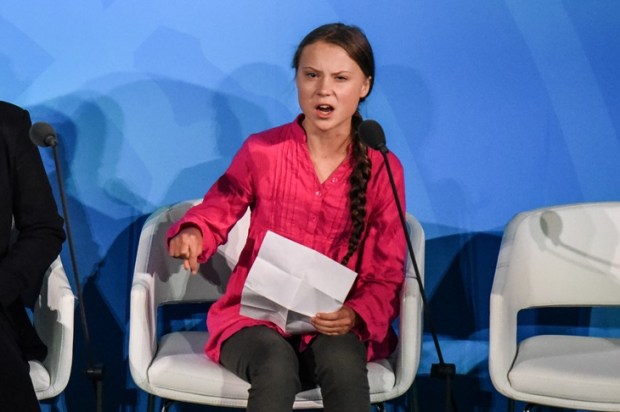It is claimed that the legendary King Canute had his chair placed at the low water mark and proclaimed, ‘Not even I can stop the tide coming in!’
Is it important, or even relevant, that the good King recognised that not even he had control over the tides?
Net Zero is the antithesis of Canute’s humble acknowledgement. Climate activists would have us believe that climate can be engineered through the regulation of atmospheric carbon dioxide.
The zealots have no idea how ocean circulations are changing our climate. To them, it is all about carbon dioxide.
Trainee meteorologists were once taught that the oceans are the inertial and thermal flywheels of the climate system. This is because the mass in a column in the atmosphere is equivalent to 10 metres of the ocean depth, and the heat content of the same atmosphere column is equivalent to about 4 metres ocean depth.
The more than 3,000 metres of ocean depth overwhelms the mass and heat of the atmosphere. The ocean sneezes and the atmosphere goes into convulsions! The current La Niña and eastern Australian rainfall underscore the point.
Fundamental to the anthropogenic global warming hypothesis, the basis of the promoted climate emergency scenario, is an assumption that pre-industrial Earth enjoyed a radiation balance. That is, Earth absorbed as much solar radiation energy as the longwave radiation it emitted to space.
Earth is not flat. Its shape means that most solar radiation is absorbed over the tropics. Energy is continuously transported poleward by the ever-changing ocean and atmosphere currents and radiation balance can only ever be transitory.
Satellites have greatly expanded the magnitude and quality of ocean and atmosphere data that have been collected over the recent forty years. There is now a very good understanding of how and why climate is changing. Carbon dioxide has a minor role!
There has been warming but the warming is neither global nor seasonally constant. In fact, the global average temperature which governments are aiming to keep below 1.5°C rise, is a poor index for reference.
‘Global warming’ is largely a manifestation of rapidly rising wintertime temperatures over the Arctic. These wintertime Arctic temperatures biased the global average.
The global average rate of warming is about 2°C per century. There has been little perceptible warming over Antarctica and the Southern Ocean. Over the tropics, the warming has been about 1°C per century. The remarkable warming has been over the Arctic, at about 8°C per century.
Adding to the intrigue, the Arctic warming has varied from about 3°C per century during summer to 13°C per century during winter.
It is some consolation that the remarkable winter warming occurs when the prevailing temperatures are about -30°C. The hibernating polar bears probably would not notice!
The source of the changing climate can be traced to the warm surface layers of the tropical oceans. These surface layers are Earth’s heat reservoir as they absorb solar radiation.
Heat is lost from the tropical ocean reservoir along two paths: ocean currents transporting heat poleward; and the exchange of heat and latent energy with the tropical atmosphere.
Over recent decades, the tropical heat reservoir has been warming at about 1°C per century. The higher ocean surface temperature has caused the rate of sensible and latent heat exchange with the tropical atmosphere to increase.
The additional heat and latent energy exchanged from the atmosphere have been transported poleward, mainly in winter months when winds are strongest.
Over the southern hemisphere, away from the tropics, there has been little warming. The cold Southern Ocean takes up the additional heat. Antarctica has only a weak pattern of winter warming.
It is the northern hemisphere, with its predominantly land surfaces, where heating registers strongest over the Arctic. The additional poleward heat transport, a maximum during wintertime, is available to support the observed warming of the surface and atmosphere.
Of fundamental interest is the question of why the tropical ocean heat reservoir is warming?
The proposition of anthropogenic forcing that underpins the climate emergency hysteria, is readily dismissed. The rising atmospheric concentration of carbon dioxide over the recent 40 years has only increased the absorption of longwave radiation in the tropical ocean by about 0.3 W/m2. This is only about one-tenth of the additional 3 W/m2 of latent heat lost to the atmosphere as the tropical oceans have warmed.
Radiation forcing from anthropogenic emissions of carbon dioxide provide energy that is an order of magnitude less than that required to sustain the increase in latent heat loss to the atmosphere from the observed tropical ocean temperature rise. The anthropogenic warming hypothesis is an inadequate explanation for the pattern of Earth’s warming over recent decades.
More likely, there has been a natural slowing of the ocean currents (such as the observed slowing of the Gulf Stream of the North Atlantic Ocean over recent decades) and a reduction in ocean heat transport. A reduction in ocean transport will result in the accumulation of heat and raising the temperature of the tropical ocean heat reservoir, as has been observed.
Climate change is not occurring because of anthropogenic carbon dioxide. Attempts to change the rate of climate change, especially by reducing anthropogenic carbon dioxide emissions, are futile.
The magnitude of recent Arctic warming should be seen in context. The duration of summer ice melt is lengthening, causing a reduction in land ice mass and thawing of the permafrost. The beneficial impact is a lengthening of the growing season over middle and high latitudes; the greening of the planet as observed by satellites. With a lengthened growing season there is increased capacity for food production, and a flourishing of the biosphere.
Taking the blinkers of fear from our eyes we would recognise that there are many aspects of global warming that are advantageous. The present trend of warming is certainly preferable to cooling, the latter with its reduced capacity for food production and prevalence of famine.
We can learn from the humility of King Canute and his assessment of tides. Climate change is natural, and we are powerless to alter its course.
William Kininmonth is a retired meteorologist and author of Climate Change: A Natural Hazard (Multi-Science Publishing, 2004)
Got something to add? Join the discussion and comment below.
Get 10 issues for just $10
Subscribe to The Spectator Australia today for the next 10 magazine issues, plus full online access, for just $10.

























Comments
Don't miss out
Join the conversation with other Spectator Australia readers. Subscribe to leave a comment.
SUBSCRIBEAlready a subscriber? Log in